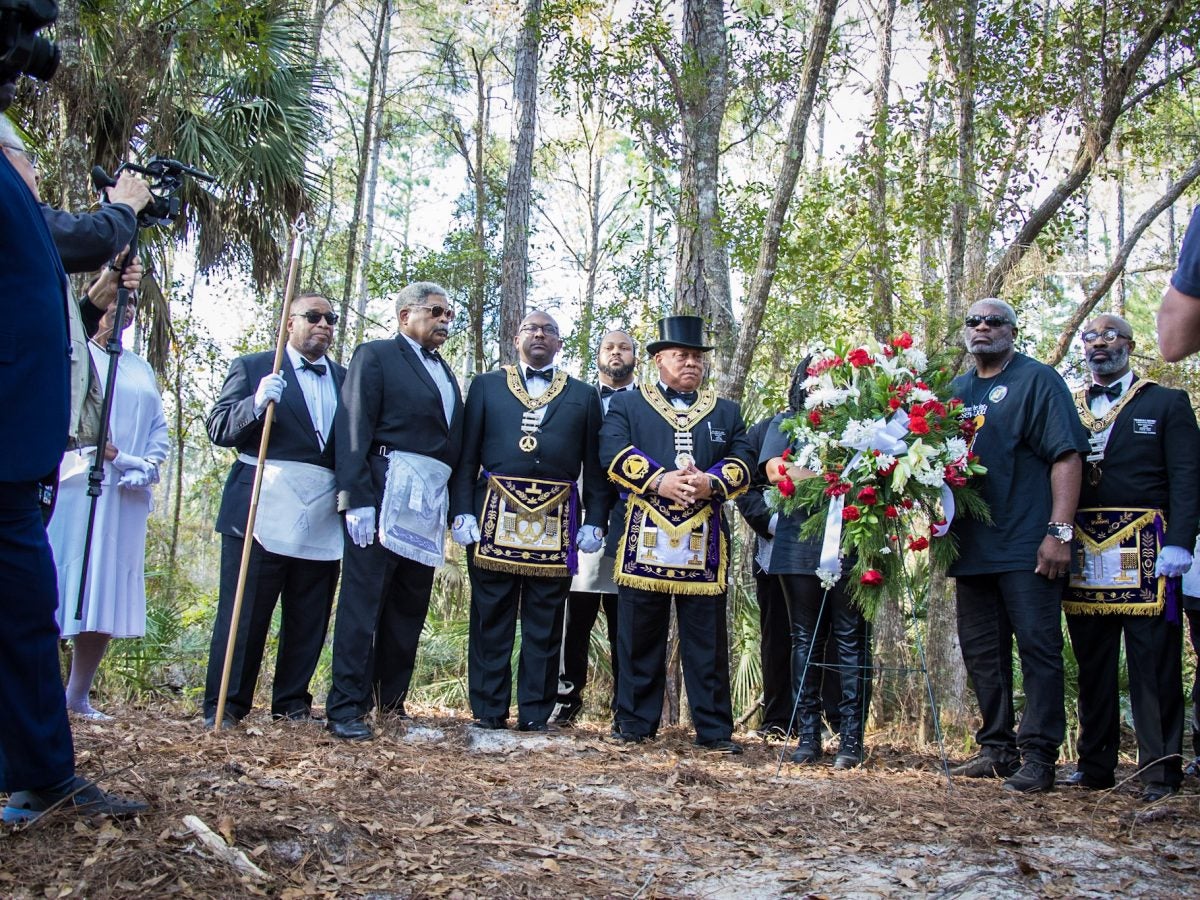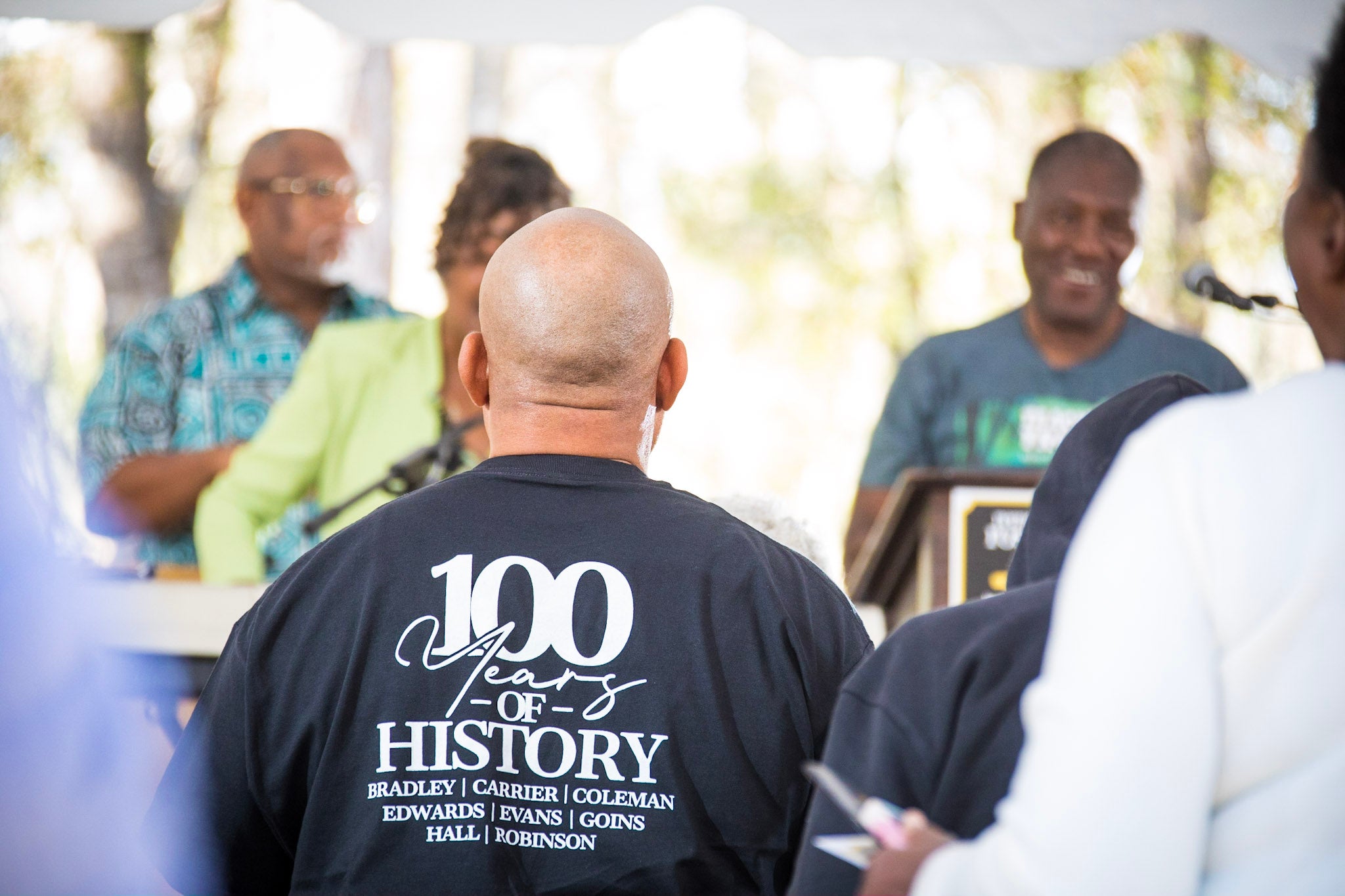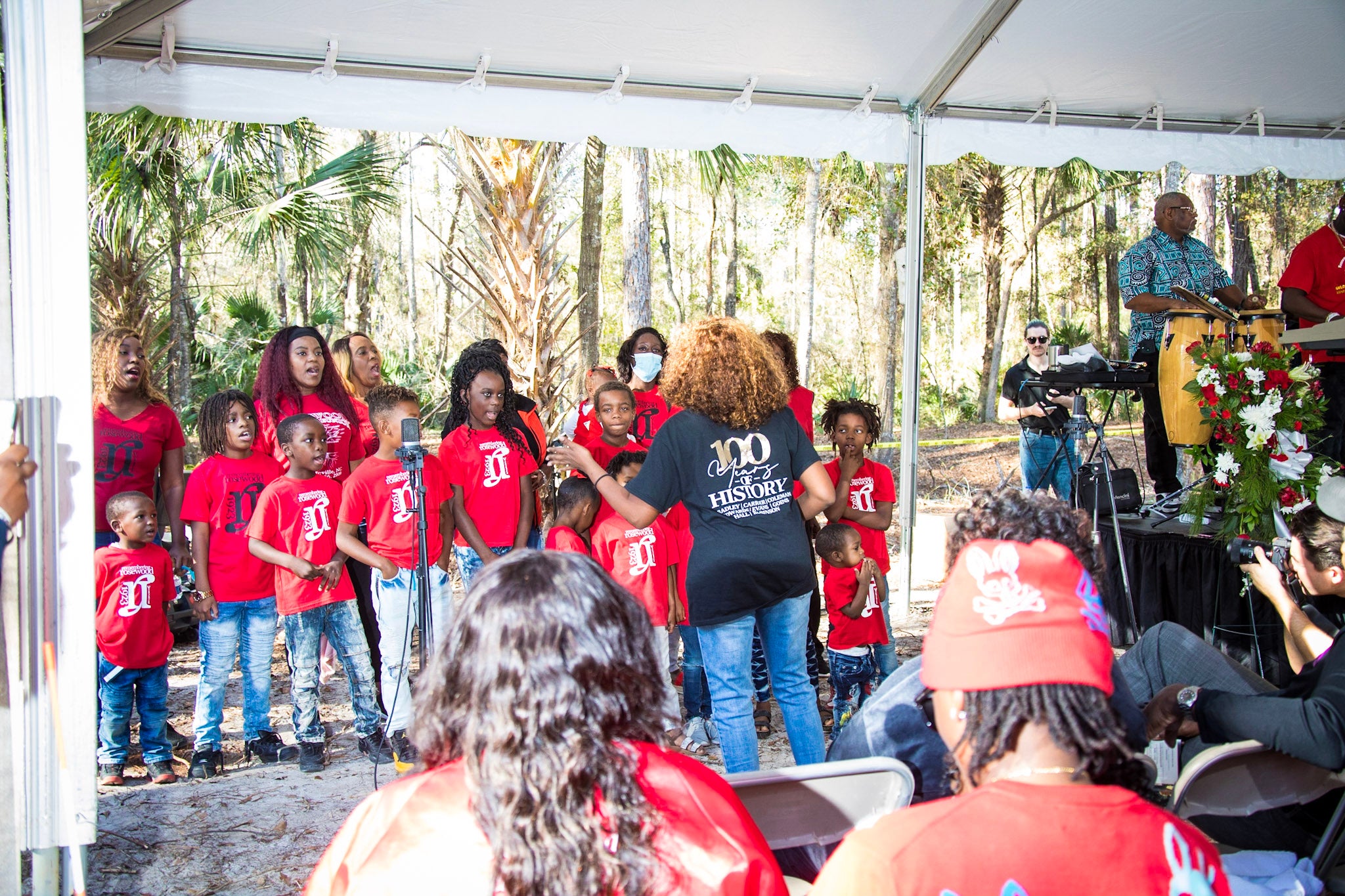
Last week, Jan. 1-7, marked the 100th Anniversary of the Rosewood Massacre. In remembrance of this centennial anniversary, the University of Florida is hosting Remembering Rosewood, a weeklong commemoration of events from January 8-14, 2023.
Before it was destroyed in 1923, Rosewood was home to a thriving Black community. The devastation began in a similar fashion as other racist, mob violence that preceded and followed the Rosewood killings, from the Tulsa Race Massacre to the killing of Emmett Till: with claims that a white woman was assaulted.
“A White woman from the nearby town of Sumner claimed she was assaulted by a Black man,” CNN notes. People in Sumner, a predominantly White town, were outraged and “began searching for the alleged and unidentified man, turning into a violent mob that lasted for a week. At least eight people were killed, including six Black people.” These are only the recorded numbers on file to date, with some estimates being much higher.
“The destruction of Rosewood entailed the systematic razing of the entire town. Every African American structure was burned and the town’s Black residents violently displaced, forced to flee and never return,” historian Edward González-Tennant writes.
Today, all that remains is “a cast aluminum historical marker.”
Unfortunately, history was almost erased as this devastating tragedy was unbeknownst to many for nearly six decades. This all changed in 1994 when “a small group of living witnesses, aided by their media-savvy descendants and a powerful law firm, persuaded the Florida state legislature to award direct cash payments to nine survivors of the event. Descendants of those survivors also received money, in the form of small cash sums and college scholarships,” Time reports.
“Though politicians carefully avoided using the term reparations, the legislation represented the first time in modern U.S. history that a government not only acknowledged its role in the centuries of systemic racism, violence and economic harm toward African Americans, but also compensated them for it,” the outlet continues.
Today, only eight families with direct descendants are still here with us to share the stories of their ancestors: the Robinsons, the Carriers, the Colemans, the Bradleys, the Evans, the Edwards, the Goins, and the Halls.
Amid the weeklong commemoration, sponsored by Holland & Knight and the Southern Poverty Law Center, ESSENCE was fortunate to speak with three descendants– Raghan Pickett, Jonathan Barry-Blocker, and Gregory Doctor– about the impact of the Rosewood Massacre, their families’ legacies, and what their hopes are for the next 100 years.

Doctor was a 19-year-old teen when he found out about Rosewood in 1982. He shares that he felt “a little angry, but mostly disappointed.” He also questioned his family, “How can you keep that away from us?” As he got older however, Doctor realized his family was “just trying to protect us.”
We are acutely aware right now of the impact of generational wealth and disparities between Black families and white families…and [I] want to see our governments and communities come together to help restore folks.
Jonathan Barry-Blocker
Barry-Blocker didn’t learn about his heritage until he was 13 years old when the movie “Rosewood” was released in 1997. “My father took me into my room set me on my bed and said, ‘hey, people may ask some questions about your grandfather because he is a survivor of Rosewood, and he was involved in the event.’ He was basically saying, we might get questions because the movie came out.” Barry-Blocker hints at the emotional toll the massacred played on his grandfather. “’Don’t ask your grandfather anything about it because he’s not going to tell you,” Barry-Blocker recalls his father telling him. “’He’s not going to answer your questions.’ And that was the extent of our discussion…We didn’t even know about the reparations that had passed four years prior.”
Twenty-year-old Pickett, a direct descendant of Willie Evans, was always taught about Rosewood, since she was born when the killings were already public knowledge. “The Massacre took away [Evans’] education because he was in high school, so it ruined every opportunity that he had to finish school, to complete school or even go to college, and that alone affected the trajectory of generational wealth…I would like to see justice being served,” Pickett asserts. “I know that some of the survivors were compensated, but 100 years later Rosewood is still a very prejudiced area and racist town. That dynamic has not changed. I would also like to see my ancestors getting their land back and working towards generational wealth, property ownership, and see Rosewood thriving again.”

Doctor has dreams for the future and “would like to see our young people being taught about the struggle and the sacrifices made,” stating “we have to start with an honest conversation and hopefully this form of dialogue will take place, because we have to talk about this, even if it’s painful. We have to educate people, because if you don’t, they won’t know, so that’s why it’s really important.”
Barry-Blocker is also an advocate for having difficult conversations and wants the events of this week to encourage families to uncover, “what pain looks like across generations, what trauma can look like, and how to talk about pain with their children and the next generations. I understand with my family that it was silent. My grandfather probably thought he was protecting himself and the rest of us by not discussing this…but I don’t think silence is the best option anymore. So, I’m hoping we all take the opportunity to learn how we can discuss these things and broach it with our kids,” he reflects.
The message of resilience and perseverance was a common thread. Pickett believes “we are moving in a positive direction, and this is a good start.” Barry-Blocker “would love to see reconciliation and restoration. We are acutely aware right now of the impact of generational wealth and disparities between Black families and white families…and [I] want to see our governments and communities come together to help restore folks.”
When asked about the next 100 years—all three descendants closed with messages of optimism. “This alone is giving me hope, more hope for a better future,” said Pickett, a sentiment echoed by Doctor and Barry-Blocker, the latter of whom praises the work of younger activists. “I’m encouraged by what I see as youth or young adult advocacy,” he shares, “and how they’re taking to the streets and lobbying, going to the legislatures and doing everything they can to make this world better.”
Photography by Dorian Owens




